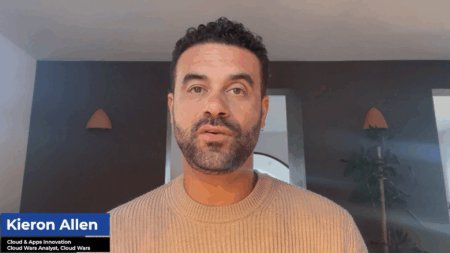During my career leading procurement organizations, I found myself in one of two kinds of reporting relationships: Within manufacturing companies, the chief procurement officer (CPO) tended to report to a global supply chain head, or maybe a chief operating officer (COO). In professional services organizations, where there isn’t a physical product being produced, CPOs often reported to the CFO. These are very different experiences.
It’s easy for a CPO to find common ground with a supply chain leader. Many procurement professionals came up the ranks in manufacturing roles, so the teams all speak the same language — and good procurement is essential to the success of the supply chain and manufacturing teams. The CPO is critical to the delivery of business strategy, a key player in disruptive times, and integral to bringing new processes and technologies from suppliers to the company.
To hear practitioner and platform insights on how solutions such as ChatGPT will impact the future of work, customer experience, data strategy, and cybersecurity, make sure to register for your on-demand pass to Acceleration Economy’s Generative AI Digital Summit.
When the reporting relationship is with the CFO, it’s much less straightforward. When you work for the CFO, you’re never going to be one of the cool kids. The CFO and the CPO haven’t followed the same career path, so they don’t have work experience in common. And the CPO is often the odd person out — the only division head on the team without a finance, accounting, or treasury responsibility. Relationship building is a challenge for a CPO when the rest of the CFO’s team members work on annual planning together, prep for shareholder meetings together, do analyses together, and so on. And then there’s the age-old issue of getting the CFO to believe the numbers provided by the CPO.
But all is not lost. Some of the classic negotiation “tricks of the trade” can be employed turn things around. With that in mind, here are tips for the CPO who wants the CFO to stop canceling meetings and start advocating for the CPO and their team:
Learn to Speak the CFO’s Language
CPOs should be educated enough in finance and accounting basics to know which actions impact different metrics. If cash flow is a problem for your company, can you adjust suppliers’ payment terms? If there‘s been an infusion of cash, what investment would you ask for and what benefit would it contribute? What can you do differently if capital is tight? In terms of operating expenses, how can the CPO help when inflation is driving costs up while government regulation is making it difficult to raise prices? The key is to ensure that procurement’s actions are helping fix the business problems that the CFO is worried about. Every set of procurement objectives should have a clear tie to the overall business strategy and the financials.
Mirror the CFO and the Finance Team
Mirroring is a negotiation technique by which a person matches their cadence of speech, terminology, and hand gestures, among other mannerisms, to the person with whom they are negotiating. The idea is to put the opposite person at ease and make them receptive to the conversation. Taking it a step further, the CPO can learn from the finance team dynamics and make sure that the procurement team is working and communicating in a similar way. If you give the CFO information in the way they are accustomed to seeing it, they are more likely to pay attention to it. For example, the CFO is all about the numbers, so don’t go in with a big idea unless you have key numbers (cost, benefit) to support the idea. And because the CFO is focused on numbers all day, metrics need to be quantifiable and reported precisely, just as the rest of the CFO’s direct reports do.
Take the CFO on Supplier Visits
There’s a lot that goes on behind the scenes in vetting new suppliers, including listening to their ideas, managing the relationships, and ensuring that there is alignment in strategy and direction. Procurement tends to do this work in isolation. We like managing the relationships, particularly if there have been some wins. But why not bring the CFO on the journey? If you choose wisely — and get the supplier execs lined up to participate — you can help the CFO develop a better appreciation for the work that goes on with key suppliers and see firsthand the contributions that procurement makes. This also helps the CFO get a sense of the challenges, a discovery that will come in handy at budget time.

Which companies are the most important vendors in data? Check out the Acceleration Economy Data Modernization Top 10 Shortlist.
Influence an Influencer
Maybe your CFO is still too busy and, as such, is not engaged in procurement. Another way to get their attention is with the influencer approach. First, look at the business leaders for whom you have done good work. Maybe you solved a supply problem or negotiated a great deal that improved margins. Then assess how close those leaders are to the CFO, and how well they are respected in your company. Ask one to advocate for you. If the CFO doesn’t pay any attention to you, they surely will listen when a peer praises procurement at an executive committee meeting.
Similarly, build a relationship with the CFO’s right-hand person. Maybe it’s the controller, the treasurer, or a respected manager who’s been with the firm for 30 years. As long as they are trusted, they don’t have to be a peer of the CFO. But they can be a great trusted advisor for the CPO.
Final Thoughts
Why am I suggesting that the CPO take all the initiative here? Because the CFO’s role has been expanding, divisions are clamoring for investment in digitization, and the CFO is worried about everything from risk management and the next shareholder meeting to an overspent capital budget. There are just too many distractions. However, with a focused effort using their negotiating toolkit, the CPO can take their relationship with the CFO several steps forward.
Sign up here for the Partners Ecosystem Digital Summit on-demand pass to see all of the Partners Ecosystem Innovation interviews that aired on April 20, 2023.
Want more tech insights for the top execs? Visit the Leadership channel:











